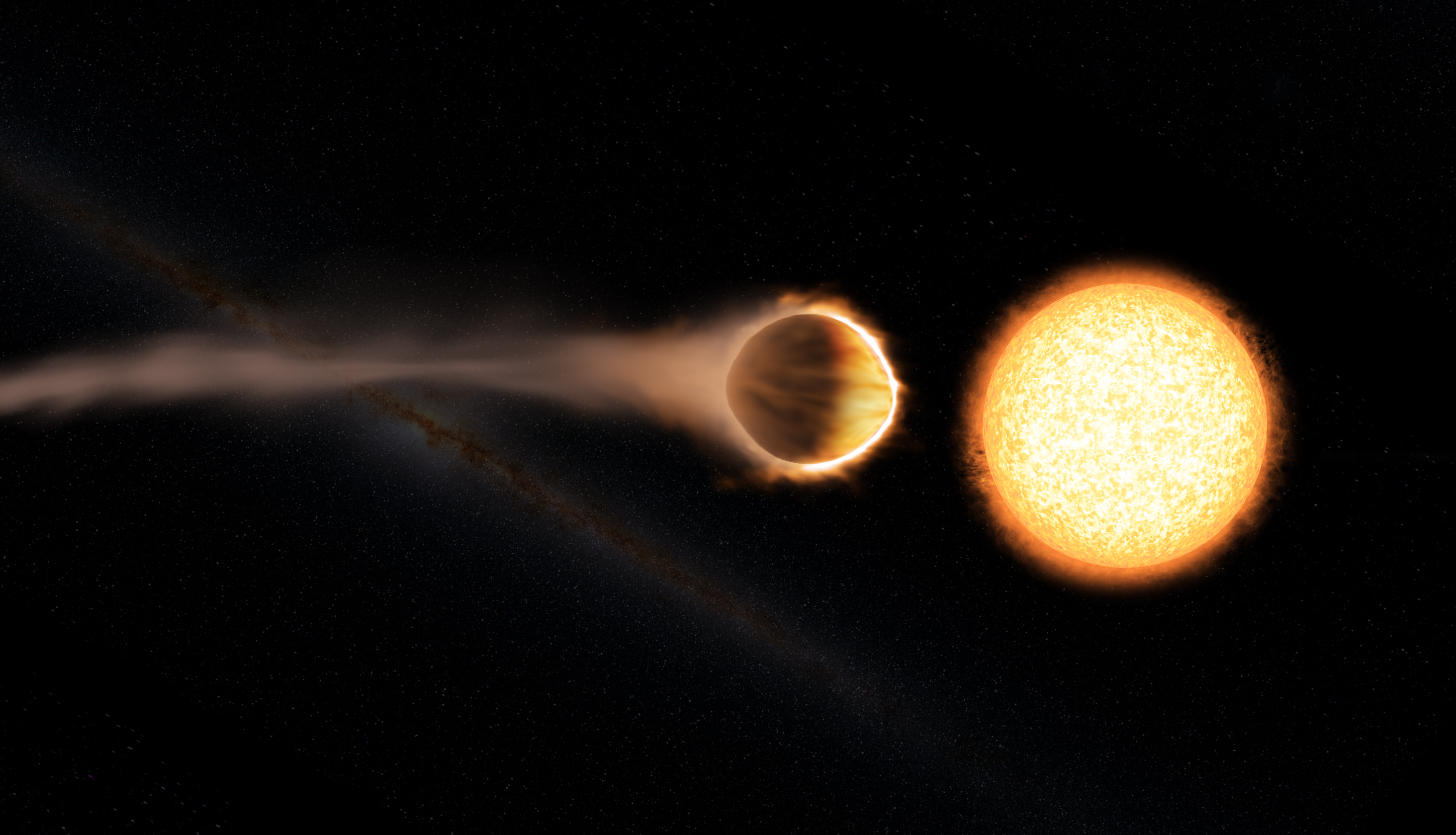
We don’t usually think of planets as having tails, like comets, but sometimes they do. One giant hot Jupiter exoplanet WASP-69b has a tail of gas much longer than previously estimated.

A gas giant exoplanet 634 light-years away has a quirk in its atmosphere that suggests it may have swallowed a smaller world.

The ESA’s CHEOPS (Characterizing Exoplanets Satellite) mission has announced its first discovery. It’s called WASP-189 b, and it’s a blistering hot temperature of 3,200 °C. They’re calling the planet an “ultra-hot Jupiter.”

Astronomers have discovered what appears to be an intact, Jupiter-size planet ( WD 1856 b ) whipping around a compact white dwarf, the remnant of a Sun-like star.

Astronomers have discovered 4 very large gas planets orbiting a young star only 2 million years old. Looks like we need a new model of planetary formation.

Recent observations by NASA's Hubble and Spitzer space telescopes of ultrahot Jupiter-like planets have perplexed theorists. The spectra of these planets have suggested they have improbable compositions.

Scientists have discovered the strongest evidence to date for a stratosphere on a planet outside our solar system.